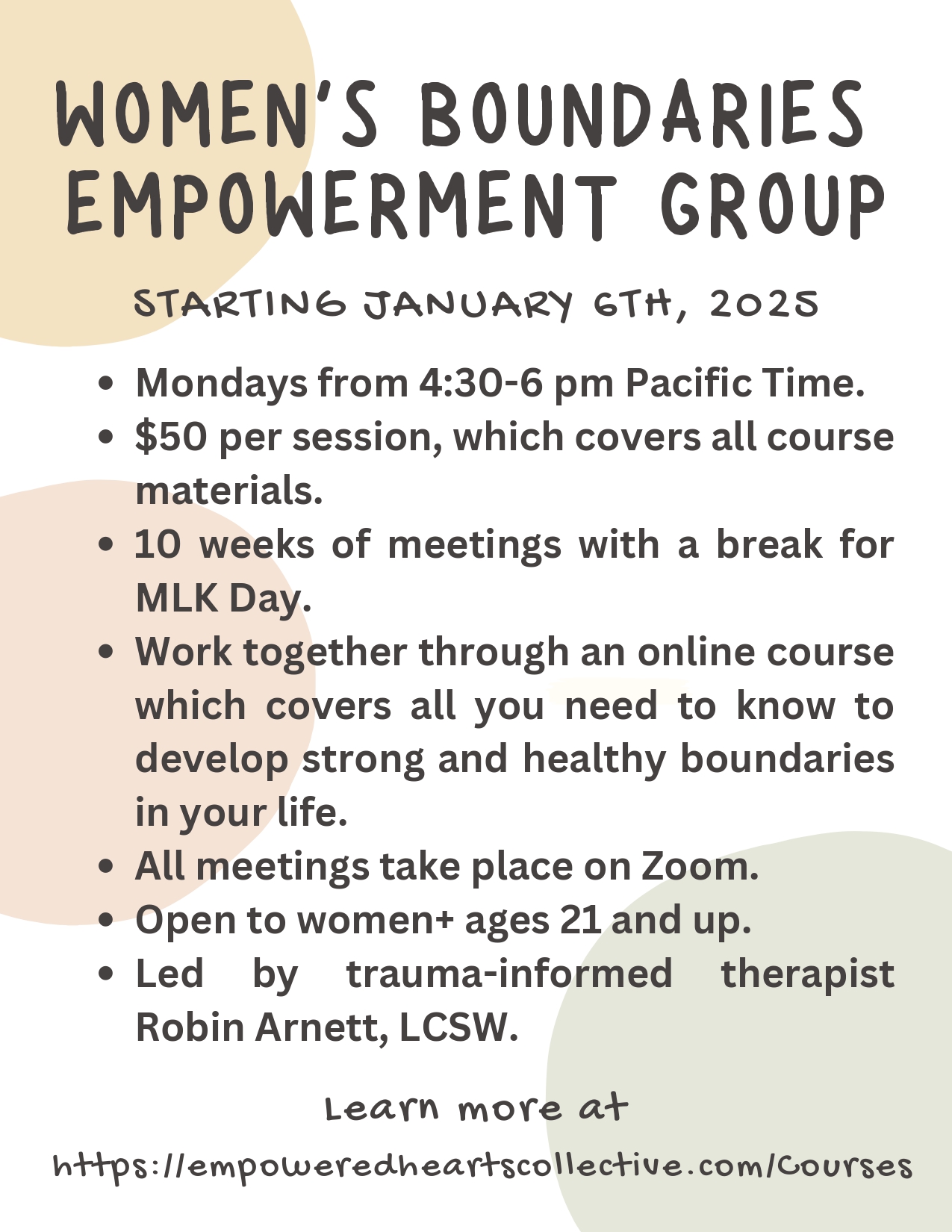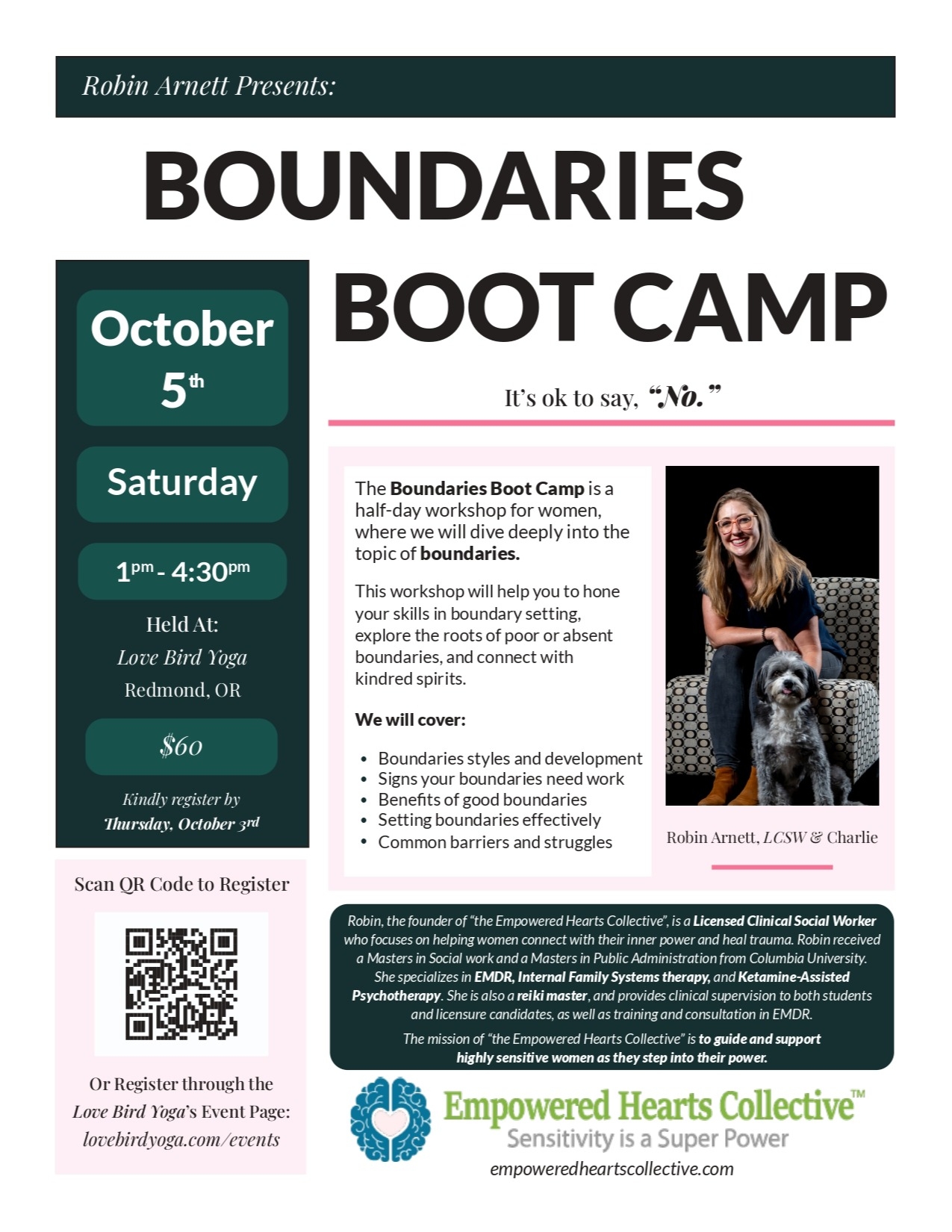Take the first step to stronger boundaries—unlock your free course, Module 7: Setting Effective Boundaries, from the Intuitive Boundaries Mastery Series.
Unlock Free ModuleNEST: The Steps to Setting an Effective Boundary
By Robin Arnett
Most of us want to get better at setting boundaries, but how do you even get started?
What Are the Steps to Setting a Boundary?
Boundaries are the limits and standards that you set for yourself and others around how you will be treated and what you will and won’t do. Setting boundaries does not have to be complicated. You can walk through what you need to do step-by-step using the acronym NEST:
- Name what's happening
- Share the effect
- Set your boundary
- Tell your story
Use NEST to plan boundaries conversations. You can do this when you decide a new boundary is needed, or to reinforce one that you’ve already established. Here’s how to do it:
Name What's Happening
Start by naming the issue where a boundary is needed.
This means stating the facts in clear and simple terms. When you’re naming the problem, it’s important to be as objective as possible without mind-reading or blaming. For example, you can say, “You have showed up to class late three times this week,” vs. “You let me down by not trying hard enough to be on time.”
Approaching the situation this way helps to keep everyone focused, and avoids landmines for conflict that distract from the real issue. It also helps you narrow down what’s really important to you.
Share the Effect
After you’ve named the issue, share some details about how what’s happening is affecting you. This can be an emotional effect like, “It makes me sad,” or a practical effect like, “This creates more work for me at home.” Again, try to be as matter of fact as possible without blaming or labeling, and keep it simple.
At the same time, remember that your reality is valid, and nobody gets to tell you what’s happening for you. Sharing the effect that you experience will help you own the importance of your own experience.
Set Your Boundary
After you’ve named the effect, it is time to set your boundary in explicit terms. This can look like making a request for a change, or saying “no” to something you’ve identified that can no longer continue. Whatever it looks like to you, it’s crucial to be direct. You’ll want to make sure that your terms are clearly stated and easy to interpret.
For example, you can say something like, “Please clean up after yourself after you make breakfast,” or “Please do not use profanity when we are in conflict.” This is not the place to beat around the bush. Make sure that you are firm and straightforward.
Tell Your Story
Finally, after you’ve named your boundary, it’s time to tell your story. This means laying out why all of this is important to you. My boundaries philosophy is that anything that you do to be a happier, healthier, and more complete version of yourself adds positive energy to the collective whole. That also means that anything that’s healthy for you is healthy for the people that you’re in relationship with, and vice versa, even if it’s uncomfortable or inconvenient. Come back to these truths for encouragement when you’re facing tough conversations.
Telling your story could sound something like, “If you can do this, it will give me more time and energy to spend with the family,” or “This is important to me because it impacts my mental health.” There is always a story and a meaning behind setting a boundary, and telling yours can have tremendous impact, both for you and for the person receiving that message.
Choose Your Medium
The NEST structure will serve you consistently across a variety of settings. However, the way you deliver your message can vary depending on the situation. There is absolutely nothing wrong with writing a letter or email, or having a conversation over the phone if it helps to relieve some tension. Sometimes tough conversations need a little space, and everyone communicates differently. Go with whatever works best for you and helps you to feel safe.
NESTing For You
Whatever your boundary, and whoever it’s with, thinking it through with NEST can give you the confidence, structure, and clarity to move forward. Try it out first with something simple, and then step up to bigger deals. Pretty soon, you’ll start thinking with NEST automatically, and boundaries will become second nature.
If you’re ready to go even deeper into mastering boundaries in a way that feels natural and empowering, the Intuitive Boundaries Mastery Series offers a supportive space to refine your skills. Through guided exercises, real-life strategies, and supportive insights, you'll gain the confidence to set and uphold boundaries with ease. Learn more and start your journey today!


